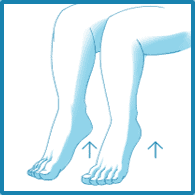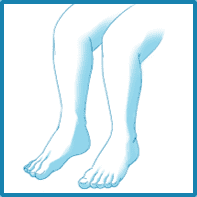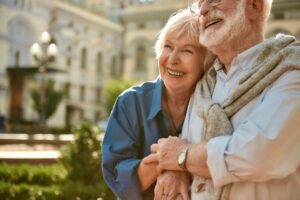During falls prevention week and falls awareness month every year, there are plenty of blogs and posts concerning how people fall. There’s much information about how to prevent falls, what to do after a fall, and even about telling your doctor. But a piece that’s missing in the conversation is when people fall and no one knows, the effects of waiting to be discovered can be devastating. They can’t help you if they don’t know. Our goal? To show you how to add more years to your independence with early intervention through education and using modern technology. Electronic Caregiver serves a variety of customers including people who fall. And it’s those people we want to intervene with quickly as for their very best outcome possible.
First things first
First and foremost, who is falling? One out of every three adults of age 65+ falls each year. Fifty percent of the people who fall this year will be 80 years or older. Death rates from falls among older men and women have risen over the past decade. Among older adults (65 or older), falls are the leading cause of injury death. They are also the most common cause of nonfatal injuries and hospital admissions for trauma.
Secondly, what outcomes are linked to falls? Twenty to thirty percent of people who fall suffer moderate to severe injuries such as lacerations, hip fractures, or head traumas. These injuries can make it hard to get around or live independently, and significantly decrease quality of life, and lifespan. Most fractures among older adults are caused by falls. The most common are fractures of the spine, hip, forearm, leg, ankle, pelvis, upper arm, and hand. Many people who fall, even if they are not injured, develop a fear of falling. This fear may cause them to limit their activities, which leads to reduced mobility and loss of physical fitness, and in turn, increases their risk of falling.
Thirdly, why do people fall? Clutter such as misplaced furniture and household items. Slipping in the shower or on wet floors is very common. Some people experience dizziness, also known as vertigo along with poor vision. If a person falls once, it doubles their chance of falling a second time within one year. This can cause some to be fearful of falling and become overly cautious.

Medication matters
According to the National Institutes of Health, polypharmacy is linked to the use of multiple medicines which is common in the elderly population. In this 2017 article concerning polypharmacy, the authors state “Polypharmacy is associated with adverse outcomes including mortality, falls, adverse drug reactions, increased length of stay in hospital and readmission to the hospital soon after discharge.”
Simply put, polypharmacy, which contributes to people falling, especially the elderly, could be defined as:
- Taking multiple or too many medications
- Purchasing your Rx’s from different pharmacies
- Taking Rx medication that does not belong to you
Everydayhealth.com encourages its readers to manage their prescription medications through several suggestions including making a list, maintaining a meds file, using only one pharmacy, getting into a routine, and using a reminder service. Medication adherence is a serious issue and the lack of adherence can cause many health issues, the least of which causing people to fall.
What did you say?
Hearing loss may affect your balance. In fact, the hearing and balance systems are connected inside the inner ear. This is why as many as 30% of deaf people may have balance challenges. In a blog ASHAWIRE talks about hearing loss and its association with the increased risk of falls, they state “even a degree of hearing loss triples the risk of an accidental fall. And this risk increases by 140 percent for every additional 10 decibels of hearing loss.”
But the number one reason people fall is?
As simple as it sounds, the lack of physical activity can lead to weak legs and this increases the chances of falling. Consequently, the benefits of physical activity are far-reaching and all of the benefits can contribute to staying on your feet. Consider the following benefits of physical activity and think of how they can help you keep from falling:
- Controlling your weight
- Reducing your risk of cardiovascular disease
- Reducing your risk for type 2 diabetes and metabolic syndrome
- Reducing your risk of some cancers
- Strengthening your bones and muscles
- Improving your mental health and mood
- Improving your ability to do daily activities
These benefits are scientifically proven to reduce the risk of people falling by more than 55%. Simple and low-impact exercise programs like Tai Chi can increase strength and improve balance, making falls much less likely.
How can we make a modest increase with physical activity?
What can we do that takes very little time, takes no equipment, doesn’t require leaving your living room, and doesn’t need a gym membership? Here are some easy exercises to do anywhere:
Driving the Car:
- While sitting in a chair, place your feet flat on the ground.
- Move your toes up on the right foot while keeping the heel of your foot stationary on the floor. This motion is like your pressing the gas on the car.
- Then move the left foot next and then alternate back and forth.
This works out your ankle muscles.



Knee Lifts:
- While sitting in a chair, place your feet flat on the ground. Now lift your knees straight up while keeping your toes stationary on the floor.
- Now lift your knees up and down.
This works out your calf muscles. You can do this while watching TV, eating meals, and doing activities.


Leg Lifts:
- While sitting in a chair, place your feet flat on the ground.
- Lift your legs up and down.
This works out your quadricep muscles. You can do this while watching TV, eating meals, and doing activities


What if people do fall?
Immediate Emergency Response is Critical:
- For people who fall, 6 hours without help results in a 90% chance of ending up in a nursing home
- Getting help in the “Golden Hour” results in a 90% chance of returning to independent living
- 60% of those with a serious injury that do not get help within one hour will not survive
The impact of technology in emergency response
- Medical alarms can reduce mortality rates by up to 400%
- Medical alarms can reduce hospitalization time by up to 48%
- More than 75% of medical alarm users report an enhanced feeling of security
- Medical alarms are the most effective way of getting immediate emergency help for everyone and people who fall
- Medical alarms can relieve anxiety and improve the overall quality of life for their users
- Medication adherence reduces the risk of falling
- Health vitals monitoring allow for real-time intervention from providers
- Monitoring systems allow the customer to take a proactive role in managing their own health
Electronic Caregiver Systems
Decidedly, Electronic Caregiver is the nation’s most comprehensive security system for your health and independence, especially for people who fall. Our systems reduce pain, suffering, loss of independence, and nursing home admissions. But, how do we compare to others?
- ECG offers more protection
- Class-B Certified operators
- Low Monthly Monitoring
- Free Installation
- Superior Customer Service
- Lifetime Product Guarantee
- Home-Safety Inspections
Electronic Caregiver on-call features for people who fall
Electronic Caregiver offers stay-on-the-line service for every one of our customers. What this means is that you or your loved one will never be all alone in a crisis. Our operators will stay on the system with you until help standing by your side. Our GPS feature makes that possible even if you have traveled away from your residence on file. You can expect, when calling for help through an ECG system, to speak with Class-B Certified 24/7/365. Customers have the ability to contact an EMT if they have a question about a medical issue.
Most significantly, you can also contact an EMT for immediate emergency response. We will contact your three closest family members or friends on your responsible party list. This is crucial, especially for people who fall and may not be able to make health decisions for themselves immediately. The easy hands-free two-way communication means that you can hear them and they can hear you, even if your unit is on the table and you are on the floor.
Choose wisely
ECG systems have much value to their users. Firstly, the value that saves lives is NOT in a button. Actually, the value that saves lives is IMMEDIATE TREATMENT. The values that save ECG customers’ lives are early intervention, consistent health practice, and our health technology that makes it all possible. We believe THAT is quality of life! An average of $1.67 per day delivers priceless value to you, your family, your friends, and your loved ones.
Agingcare.com has an excellent article on How to Choose a Senior Medical Alert System. We are proud to say that Electronic Caregiver not only meets the minimums but well exceeds them for our customers. Learn more about our Premier and Pro Health systems to find the one we could customize specifically for your needs and budget. Don’t settle or fall for less.
Finally for people who fall
Try the system with a 30-day money-back guarantee! If you don’t have a phone line, we have a solution. Don’t wait until you think you need it. You have nothing to lose, and everything to gain. Call us today at 833-ECG-LIFE. Or visit the rest of our website to find out more and ask anything you’d like to know on our chat with a live customer service representative! We look forward to connecting with you. In the meantime, don’t be or become one of the people who fall. Be healthy, be proactive, and get protected just in case.

